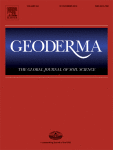Assessment and monitoring of soil resources is needed for ensuring environmental sustainability of rice production in sub-Saharan Africa (SSA). Diffuse reflectance spectroscopy has the potential to offer means to evaluate and monitor soils at large scale in an efficient, affordable and timely manner. However, its accuracy for predicting chemical and physical properties of soils under rice cultivation is little known. The objectives of this study were to i) determine physical and chemical soil fertility properties which can be accurately analyzed using near infrared (NIR) (700–2500 nm), mid-infrared (MIR) (2500–16,670 nm), or a combination of both (NIR-MIR) (700–16,670 nm) spectral libraries, ii) compare their prediction potential for identifying the most suitable spectral range for simultaneous analysis of soil fertility properties, and iii) assess degrees of variation of 29 soil fertility properties for 2845 soil samples collected from 42 study sites in 20 SSA countries. Diffuse reflectance spectroscopy data were obtained using a Fourier-transform infrared spectrometer (FT-IR) Tensor 27 with a high-throughput screening (HTS-XT) extension unit. About 10% of the whole sample set was chosen for conventional wet chemistry soil analysis, and was used for developing best fitted models with partial least squares regression (PLSR) that can estimate soil fertility properties using infrared (IR) spectra. The prediction performances were evaluated by R2, RMSE and RPIQ. Good prediction models (0.75 < R2 ≤ 0.86 and 1.36 ≤ RPIQ ≤ 3.78) were obtained for 13 soil properties consisting of pH H2O 1:2, exchangeable Ca, exchangeable Mg, sum of exchangeable cations, CEC, ECEC, base saturation percentage, total N, total organic C, clay content, silt content, phosphorus sorption index (PSI) and extractable Al. Satisfactory predictions (0.53 ≤ R2 ≤ 0.75 and 0.59 ≤ RPIQ ≤ 2.56) were obtained for pH H2O 1:2.5, exchangeable K, extractable Mn, Cu, and B, and sand content. NIR, MIR, and combined NIR-MIR diffuse reflectance spectroscopy demonstrate the best prediction potential for 14, 21, and 76% of the studied soil fertility properties, respectively. Except soil pH, most of soil properties are moderate to highly variable (CV = 21–131%). On average, soils in rice fields are characterized by moderate acidity, and low total N, available P and B. In conclusion, the combined NIR-MIR diffuse reflectance spectroscopy can offer an alternative to conventional wet chemistry methods for assessing soil fertility properties in rice fields in SSA, except for those having poor prediction potentials.
Near-infrared, mid-infrared or combined diffuse reflectance spectroscopy for assessing soil fertility in rice fields in sub-Saharan Africa.
Citation: Johnson, J.M.; Vandamme, E.; Senthilkumar, K.; Sila, A.; Shepherd, K.D.; Saito, K. 2019. Near-infrared, mid-infrared or combined diffuse reflectance spectroscopy for assessing soil fertility in rice fields in sub-Saharan Africa. Geoderma. ISSN: . 354
2019-11-27
CLIMATE CHANGE
Africa, Africa South of Sahara
journal_article

